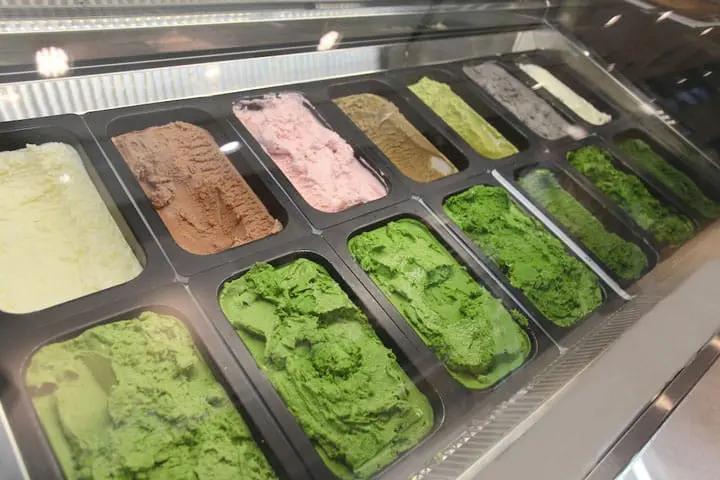Exploring Japanese Teas: Matcha, Sencha, Hojicha, and Beyond!

In Japan, you'll find a wide variety of teas, with green tea being just one of them. Read on to learn about the main types, and refer back to this article when tasting new types of Japanese teas!
The Diversity of Japanese Tea: Same Family, Different Brews

There are a plethora of teas in Japan. However, there are only a handful of people can clearly explain the differences between each beverage. Some drinks aren’t even made with tea leaves, yet have the kanji for tea or “茶/cha” in their name!
This article will explain the types of tea in Japan, including both their similarities and differences. Refer to these descriptions the next time you’re choosing a product at the convenience store, supermarket, or specialty shop.
Table of Contents
- Main Varieties of Green Tea (Ryokucha)
- 1. Matcha
- 2. Sencha
- 3. Gyokuro
- 4. Hojicha
- 5. Genmaicha
- 6. Bancha
- Teas That Don't Contain Tea Leaves
- 7. Mugicha
- 8. Kombucha
- 9. Wakocha: Japanese Black Tea
Main Varieties of Green Tea (Ryokucha)

Ryokucha is the general term for green tea. Many of the common varieties of tea in Japan are ryokucha. It is made with leaves from a tea plant called camellia sinensis that are processed with heat to avoid further fermentation. Another name for this tea is fuhakkocha (unfermented tea).
1. Matcha

Matcha is a powdered tea made from tea leaves grown in shade for a set period. Once the leaves are dried, they are ground to a smooth powder in a stone mill. Matcha has a unique fresh scent with a strong fragrance. Its fine quality gives matcha a great flavor!
The traditional culture of inviting guests to a tea room and welcoming them with tea prepared from matcha powder is called sado, or tea ceremony.
2. Sencha

Sencha is the most common variety of ryokucha available. This tea is made by steaming plucked tea leaves, then rolling them dry. It has a refreshing taste with a great balance of flavor and astringency.
Read also
3. Gyokuro

Gyokuro is the highest grade of green tea. Similar to matcha, gyokuro is made from leaves that are covered and blocked from the sunlight for a set period while growing. It’s characterized by its mild sweetness and deep flavor. Compared to other green teas, it has a higher caffeine content.
4. Hojicha

Hojicha has an enhanced aroma, because the tea leaves are roasted over high heat while drying. It has a smooth taste with almost no bitterness or astringency, as the caffeine evaporates during the roasting process.
Read also
5. Genmaicha

This tea is a mixture of roasted rice and sencha-like green tea. It’s known for its savory brown rice aroma. The tea itself doesn’t contain a lot of tea leaves, so it’s low in caffeine.
6. Bancha

This drink is made with tea leaves that have matured and hardened. The manufacturing process differs from region to region, so this tea can either have a green or brown hue.
Teas That Don't Contain Tea Leaves
In Japan, you’ll also find drinks referred to as teas that aren’t made with any tea leaves. These beverages contain no caffeine, since tea leaves are not an ingredient.
7. Mugicha

Mugicha, or barley tea, is a popular variety of tea consumed nearly as often as sencha at home. It's made by steeping roasted barley seeds in hot or ice water. This drink is full of minerals and frequently enjoyed chilled during sweltering summer days.
8. Kombucha

This drink called kombucha (not to be confused with the fermented tea known outside of Japan as kombucha) is made by adding hot water to dried kelp that has been finely chopped or made into a powder.
Ume kombucha is a famous version of this tea, made by adding a dash of salt and shredded, dried plums. It has a distinctive, slightly salty taste.
9. Wakocha: Japanese Black Tea

Wakocha refers to black tea (kocha) grown and harvested in Japan. It is made from the same camellia sinensis leaves as ryokucha. The Japanese black tea is characterized by a lack of astringency and a subtle flavor. Wakocha is mainly sold at specialty shops due to its smaller production volume compared to ryokucha.
Learn the Basics of Japanese Teas and Take the Next Step!
Visit a specialty tea shop, and you can find many tea varieties from across Japan. Nowadays, there are numerous tea products and herbal tea blends sold in stores.
Now that you’ve learned the differences between the main types of teas, what’s next? We recommend delving deeper into the world of these delicious Japanese beverages!
All Photos by Pixta
This is the official account of MATCHA's editorial department. Our articles feature useful travel information for visitors to Japan, from how-to guides to recommended places to visit.







































![[2026] Top 5 Strawberry Picking Spots in Tokushima, Naruto| Farms and Access Guide for January to May](https://resources.matcha-jp.com/resize/720x2000/2025/03/06-227165.webp)


